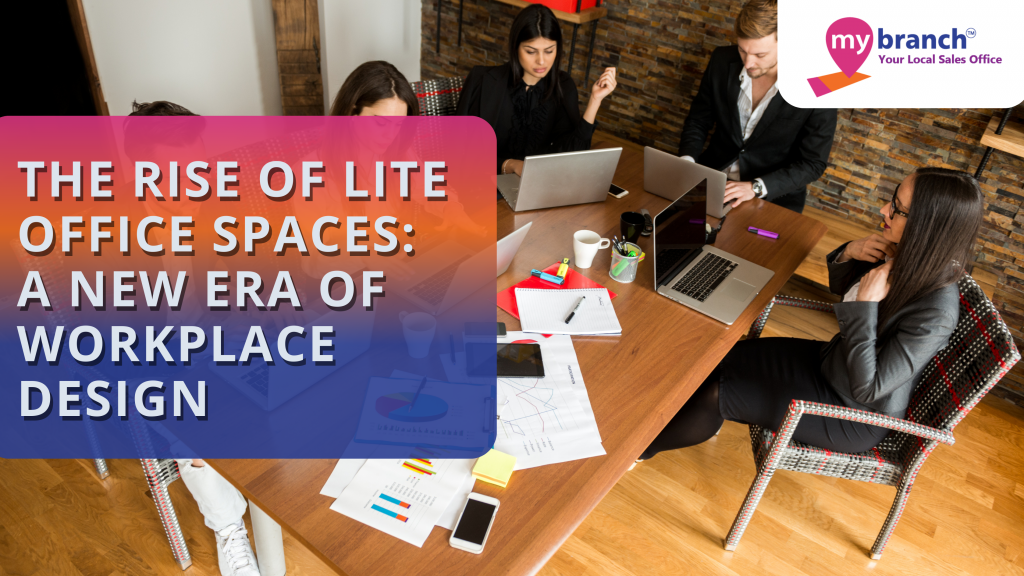
Welcome to the world of modern workplaces! It’s a place where change happens at the speed of light, driven by the latest technology, new work culture, and a big focus on being efficient and flexible. One of the most exciting things we’ve seen in this transformation is the rise of lite office spaces. These spaces are like the superheroes of office design, and they’re changing the game when it comes to how and where we work. Today, let’s dive into what lite office spaces are all about, what’s making them so popular, and the awesome perks they bring to both businesses and employees.
So, what exactly are these “lite office spaces,” you ask? Well, think of them as the minimalist, flexible, and super adaptable cousins of traditional offices. Unlike the old-school setups with fixed cubicles and bulky furniture, small office spaces are all about being lean and ready for change.
Let’s break down some of the key features that make these spaces special:
Flexibility: Lite and small office space are highly adaptable and can be easily reconfigured to suit the changing needs of businesses. This flexibility is essential in a dynamic and fast-paced work environment.
Minimalism: These spaces often incorporate minimalist design principles, focusing on reducing clutter and creating a clean, uncluttered atmosphere that promotes productivity and creativity.
Resource Efficiency: Lite offices are resource-efficient, making the most of available space and resources, resulting in cost savings and reduced environmental impact.
Technology Integration: They are equipped with the latest technology, supporting remote work, collaboration, and communication. High-speed internet, video conferencing facilities, and smart office features are common in these spaces.
Short-Term Leases: Lite office spaces typically offer flexible lease terms, allowing businesses to scale up or down as needed without the long-term commitments of traditional leases.
Community and Collaboration: These spaces often foster a sense of community and collaboration among members. They provide shared common areas, which encourage interaction and networking.
Now, you might be wondering, “What’s driving the rise of these lite office spaces?” Well, there are a bunch of factors:
Changing Work Habits: The way people work is evolving. With the rise of remote work and the gig economy, traditional 9-to-5 office structures are becoming less relevant. Lite office spaces cater to the needs of freelancers, startups, and remote workers.
Cost-Effective Solutions: For small businesses and startups, leasing traditional office space with long-term commitments can be cost-prohibitive. Lite office spaces offer an affordable alternative, allowing businesses to access prime locations without breaking the bank.
Work-Life Balance: Lite office space can be an attractive option for those seeking a better work-life balance. With more flexible hours and less time spent commuting, employees can enjoy a better quality of life.
Focus on Sustainability: Many lite office spaces prioritize sustainability and environmental consciousness, reducing waste and energy consumption. This aligns with the values of businesses and individuals looking to reduce their ecological footprint.
Technology Advancements: The rapid advancement of technology has made it easier for people to work from anywhere. Lite office spaces embrace this shift by providing the necessary technology and infrastructure for remote work.
Now, let’s talk about the good stuff – the benefits of diving into the world of lite office spaces:
1. Cost Efficiency: Small office space for rent provides a budget-friendly solution for /
businesses. With flexible lease terms and shared resources, businesses can save on overhead costs.
2. Adaptability: These spaces can easily adapt to accommodate changes in workforce size, work styles, or project requirements, making them ideal for startups and rapidly growing businesses.
3. Enhanced Productivity: The minimalist and clutter-free environment of lite office spaces fosters productivity. Employees can focus better, and businesses can achieve higher efficiency.
4. Access to Prime Locations: Lite office spaces are often situated in prime locations, giving businesses a prestigious address without the high costs associated with traditional office spaces.
5. Community and Networking: Many lite office spaces encourage interaction and collaboration among members. This can lead to valuable networking opportunities and the exchange of ideas.
6. Environmental Sustainability: Lite office spaces are often designed with sustainability in mind, reducing waste and promoting eco-friendly practices.
7. Work-Life Balance: Remote work options and flexible hours provided by lite office spaces contribute to a better work-life balance for employees.
8. Technology Integration: Businesses can take advantage of advanced technology infrastructure, enabling seamless remote work and collaboration.
The Future of Work
As the workplace continues to evolve, lite office spaces are likely to play an increasingly prominent role in shaping the future of work. Their adaptability, cost efficiency, and focus on employee well-being make them an appealing choice for businesses and individuals looking to thrive in this new era of workplace design.
The rise of lite office spaces signals a shift towards a more dynamic, collaborative, and flexible work environment. It’s a testament to the fact that work is no longer confined to a specific location, but rather a dynamic and fluid experience that can be tailored to the unique needs of businesses and employees.
In conclusion, the rise of lite office spaces represents a new era in workplace design, where flexibility, adaptability, and simplicity take center stage. These spaces are not just a trend but a response to the changing landscape of work, catering to the needs of a diverse and evolving workforce. As businesses continue to embrace the benefits of lite office spaces, we can expect to see more innovation and growth in this sector, shaping the future of work for years to come.
